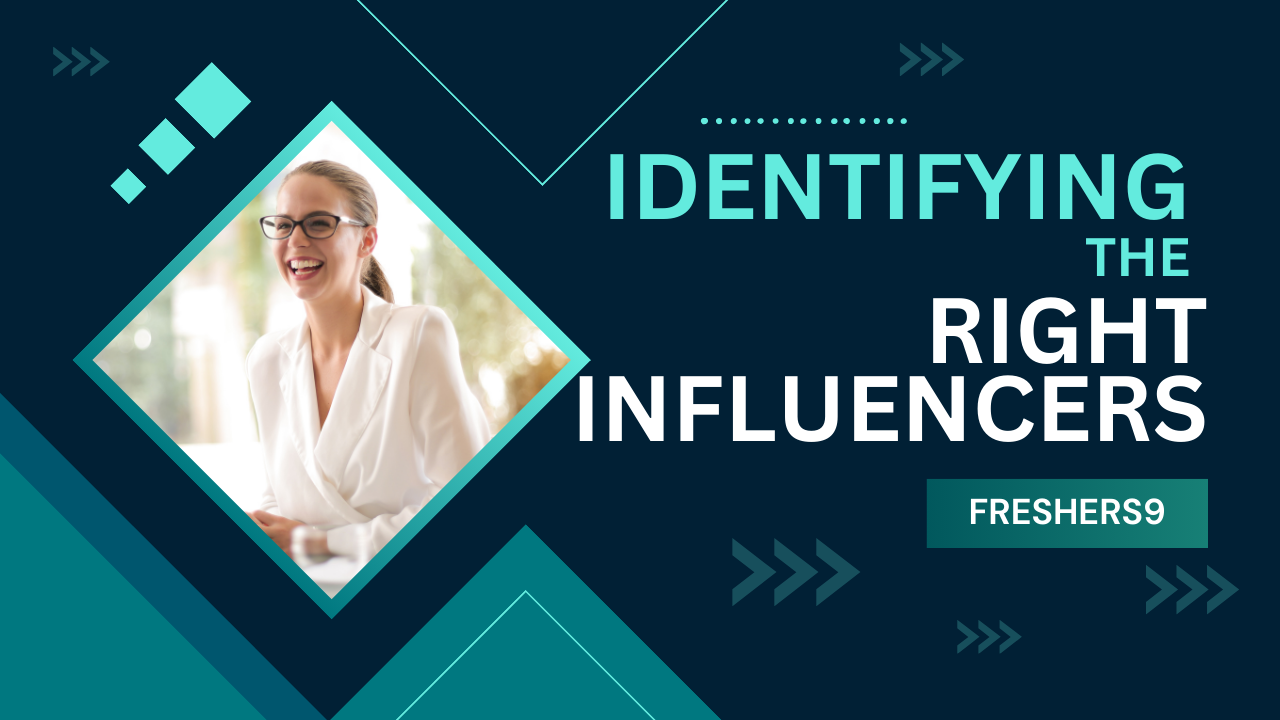Boost Your Brand's Reach With Effective Influencer Marketing Strategies
Influencer marketing has become a cornerstone of modern marketing strategies, allowing brands to tap into the established audiences of popular social media personalities. By leveraging the trust and reach of influencers, businesses can significantly expand their brand visibility and engagement. This guide explores effective influencer marketing strategies to help you boost your brand's reach.
Understanding Influencer Marketing
What is Influencer Marketing?
Influencer marketing involves partnering with social media influencers who have a large and engaged following to promote your products or services. These influencers can be bloggers, YouTubers, Instagrammers, or TikTok creators who have the power to influence their audience's purchasing decisions.
Benefits of Influencer Marketing
- Increased Brand Awareness: Reach a wider audience and increase brand visibility.
- Enhanced Credibility: Gain the trust of consumers who value the influencer's opinion.
- Targeted Marketing: Reach specific demographics aligned with your target market.
- Improved Engagement: Generate higher engagement rates through authentic content.
Identifying the Right Influencers

Types of Influencers
- Mega-Influencers: Celebrities with millions of followers.
- Macro-Influencers: Influencers with hundreds of thousands of followers.
- Micro-Influencers: Individuals with 10,000 to 100,000 followers.
- Nano-Influencers: Every day individuals with 1,000 to 10,000 followers.
Finding the Perfect Match
- Relevance: Choose influencers whose content aligns with your brand values and products.
- Engagement Rates: Look beyond follower count and focus on engagement rates.
- Authenticity: Select influencers who maintain authenticity and have a genuine connection with their audience.
- Audience Demographics: Ensure the influencer’s audience matches your target market.
Tools for Finding Influencers
- Influencer Marketplaces: Platforms like AspireIQ, Upfluence, and Tribe.
- Social Media: Use social media platforms' search and explore features.
- Influencer Agencies: Collaborate with agencies that specialize in influencer marketing.
Crafting a Successful Influencer Marketing Campaign
Set Clear Objectives
Define what you aim to achieve with your influencer marketing campaign. Common objectives include:
- Brand Awareness: Increase visibility and reach.
- Engagement: Boost likes, comments, and shares.
- Conversions: Drive sales and lead generation.
- Content Creation: Generate high-quality content for your brand.
Develop a Campaign Strategy
- Campaign Type: Decide on the type of campaign, such as product reviews, giveaways, unboxing videos, or sponsored posts.
- Content Guidelines: Provide influencers with guidelines on brand messaging, hashtags, and content formats.
- Compensation: Determine how you will compensate influencers (monetary, free products, affiliate commissions).
Creating Authentic Content
- Creative Freedom: Allow influencers to create content in their unique style to maintain authenticity.
- Storytelling: Encourage influencers to tell a story around your product rather than just promoting it.
- Visual Appeal: Ensure high-quality visuals that resonate with the influencer’s audience.
Measuring and Analyzing Campaign Performance
Key Metrics
Track and analyze key metrics to evaluate the success of your campaign:
- Reach: The total number of people who see the content.
- Engagement: Likes, comments, shares, and overall interaction.
- Conversions: Sales, leads, or any other specific actions taken by the audience.
- Return on Investment (ROI): The overall return compared to the cost of the campaign.
Tools for Analysis
- Google Analytics: Track traffic and conversions from influencer campaigns.
- Social Media Analytics: Use built-in analytics tools on platforms like Instagram, YouTube, and Twitter.
- Third-Party Tools: Platforms like Hootsuite, Sprout Social, and BuzzSumo for comprehensive campaign analysis.
Building Long-Term Relationships with Influencers
Collaboration and Communication
- Transparency: Be clear about campaign expectations and compensation.
- Regular Communication: Maintain open lines of communication before, during, and after the campaign.
- Feedback and Support: Provide constructive feedback and support to influencers throughout the collaboration.
Ongoing Partnerships
- Ambassador Programs: Create brand ambassador programs for long-term collaborations.
- Exclusive Deals: Offer influencers exclusive deals or early access to new products.
- Co-Creation: Involve influencers in product development and marketing strategy.
Case Studies: Successful Influencer Marketing Campaigns
Glossier: Building a Beauty Empire
Glossier leveraged micro-influencers and customer-generated content to create a community-driven brand. By focusing on real users and their experiences, Glossier achieved high engagement and brand loyalty.
Daniel Wellington: The Power of Instagram
Daniel Wellington’s influencer marketing strategy involved partnering with a large number of Instagram influencers to promote their watches. This approach led to exponential growth in brand awareness and sales.
Nike: Collaborating with Mega-Influencers
Nike’s collaborations with mega-influencers like Cristiano Ronaldo and Serena Williams have amplified their brand reach and reinforced their position as a leading sportswear brand.
Navigating Potential Challenges in Influencer Marketing
While influencer marketing can yield significant benefits, it also comes with potential challenges. Here’s how to navigate and overcome them:
Ensuring Authenticity
Challenge: Consumers can easily detect inauthentic endorsements, which can harm your brand’s reputation. Solution:
- Choose influencers who genuinely resonate with your brand.
- Allow influencers creative freedom to ensure their content remains authentic.
- Build long-term partnerships rather than one-off collaborations to foster genuine enthusiasm for your brand.
Measuring ROI
Challenge: Calculating the exact return on investment from influencer campaigns can be difficult. Solution:
- Use unique tracking links and discount codes to measure conversions directly from influencer campaigns.
- Track engagement metrics such as likes, comments, shares, and follower growth.
- Utilize comprehensive analytics tools to gather and analyze campaign data.
Compliance and Disclosure
Challenge: Regulatory guidelines require influencers to disclose sponsored content, and non-compliance can lead to legal issues. Solution:
- Ensure influencers are aware of and comply with disclosure regulations such as the FTC guidelines in the U.S.
- Include clear disclosure guidelines in your influencer agreements.
- Monitor influencer posts to ensure proper disclosure practices are followed.
Managing Influencer Relationships
Challenge: Building and maintaining relationships with multiple influencers can be time-consuming. Solution:
- Use influencer marketing platforms to streamline communication and campaign management.
- Create a dedicated team or hire an agency to manage influencer partnerships.
- Develop a structured process for onboarding, communication, and feedback.
Trends in Influencer Marketing
Stay ahead of the curve by keeping up with the latest trends in influencer marketing:
Micro and Nano-Influencers
Micro and nano-influencers often have higher engagement rates and more loyal followings compared to mega and macro-influencers. Brands are increasingly turning to these smaller influencers for more authentic and cost-effective campaigns.
Video Content and Live Streaming
Video content, particularly live streaming, continues to grow in popularity. Platforms like Instagram Live, TikTok, and YouTube offer opportunities for real-time engagement and more dynamic content.
Influencer Marketing in Niche Markets
Brands are targeting niche markets through influencers who specialize in specific areas, such as sustainability, fitness, or tech. This approach allows for more targeted and relevant campaigns.
Augmented Reality (AR) and Virtual Influencers
The use of AR in influencer marketing is on the rise, with brands creating interactive experiences for their audiences. Additionally, virtual influencers, computer-generated characters, are becoming popular for their ability to create unique, controlled brand narratives.
Future of Influencer Marketing

Integration with AI and Data Analytics
Artificial Intelligence (AI) and data analytics are transforming influencer marketing by providing deeper insights into audience behaviour and campaign performance. AI tools can help in identifying the right influencers, predicting campaign outcomes, and personalizing content.
Enhanced Brand Safety Measures
As influencer marketing matures, brands are implementing stricter brand safety measures to avoid controversies and ensure alignment with brand values. This includes thorough vetting of influencers and ongoing monitoring of their content.
Emphasis on Long-Term Collaborations
Long-term collaborations with influencers are becoming more common as brands seek to build deeper, more authentic relationships. These partnerships can lead to more consistent messaging and stronger brand loyalty.
Rise of Decentralized Platforms
Decentralized social media platforms, which prioritize privacy and user control, are emerging as potential new spaces for influencer marketing. Brands will need to adapt their strategies to engage audiences on these platforms.
Influencer marketing is a powerful strategy to boost your brand's reach and engagement. By identifying the right influencers, crafting authentic and compelling content, and measuring campaign performance, you can create successful influencer marketing campaigns that drive significant results. Building long-term relationships with influencers can further enhance your brand's credibility and loyalty. Start leveraging influencer marketing today to take your brand to new heights.